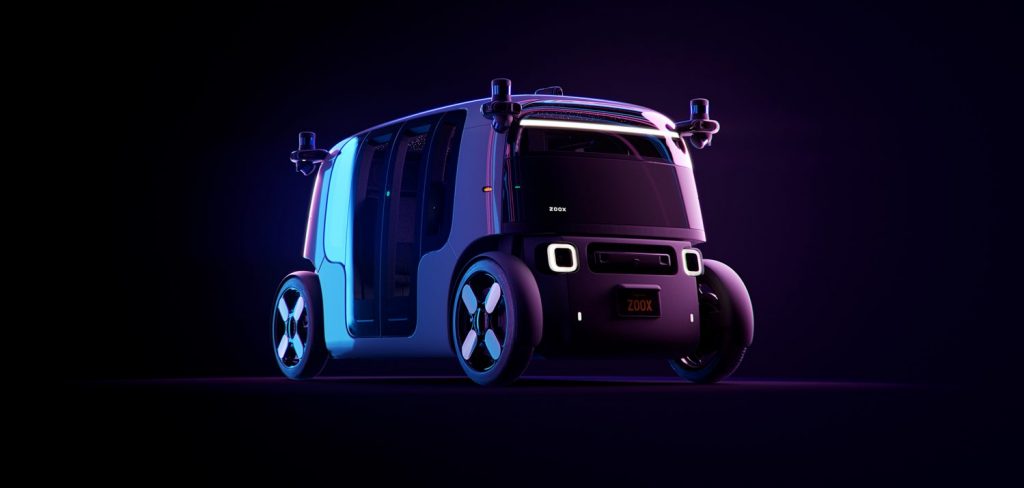Autonomous mobility company Zoox has released details of its electric, autonomous vehicle that is designed for dense, urban environments and is capable of operating at up to 75mph (120km/h).
Zoox claims it is the only vehicle to offer bidirectional driving capabilities and four-wheel steering, which enables maneuvering through compact spaces and changing directions without the need to reverse. At 3.63m long, it also has a small footprint and features a four-seat, face-to-face symmetrical seating configuration that eliminates the steering wheel and bench seating seen in conventional car designs. The vehicle also uses a 133kWh battery, claimed to allow it to operate for up to 16 hours on a single charge.
“Revealing our functioning and driving vehicle is an exciting milestone in our company’s history and marks an important step on our journey towards deploying an autonomous ride-hailing service,” said Aicha Evans, Zoox CEO. “We are transforming the rider experience to provide superior mobility-as-a-service for cities. And as we see the alarming statistics around carbon emissions and traffic accidents, it’s more important than ever that we build a sustainable, safe solution that allows riders to get from point A to point B.”
Zoox claims the vehicle design has more than 100 safety innovations not featured in conventional cars, including an airbag system for bidirectional vehicles and carriage seating that envelops passengers. The vehicle utilizes a sensor architecture of cameras, radar and lidar to obtain a 270° field of view on all four corners of the vehicle, eliminating typical blind spots and allowing the vehicle to consistently track objects next to and behind it, including pedestrians, bicyclists and other road users.
“Safety is the foundation of everything we do. Building a vehicle from the ground up has given us the opportunity to reimagine passenger safety, shifting from reactive to proactive measures,” added Jesse Levinson, Zoox CTO and co-founder. “These include new safety features such as our airbag design, redundant hardware throughout the vehicle, a unique sensor architecture, and a custom AI stack that detects and mitigates potential risks. Our vehicle has passed key FMVSS crash tests, and we are continuing to look for new, innovative ways to protect our riders and others on the road.”


